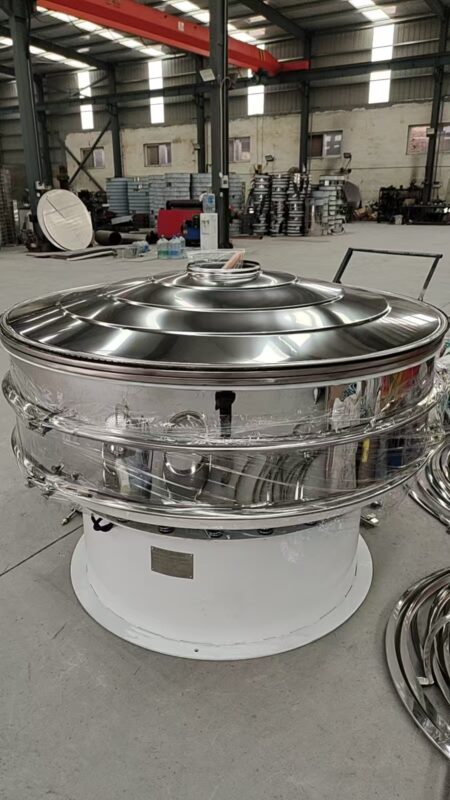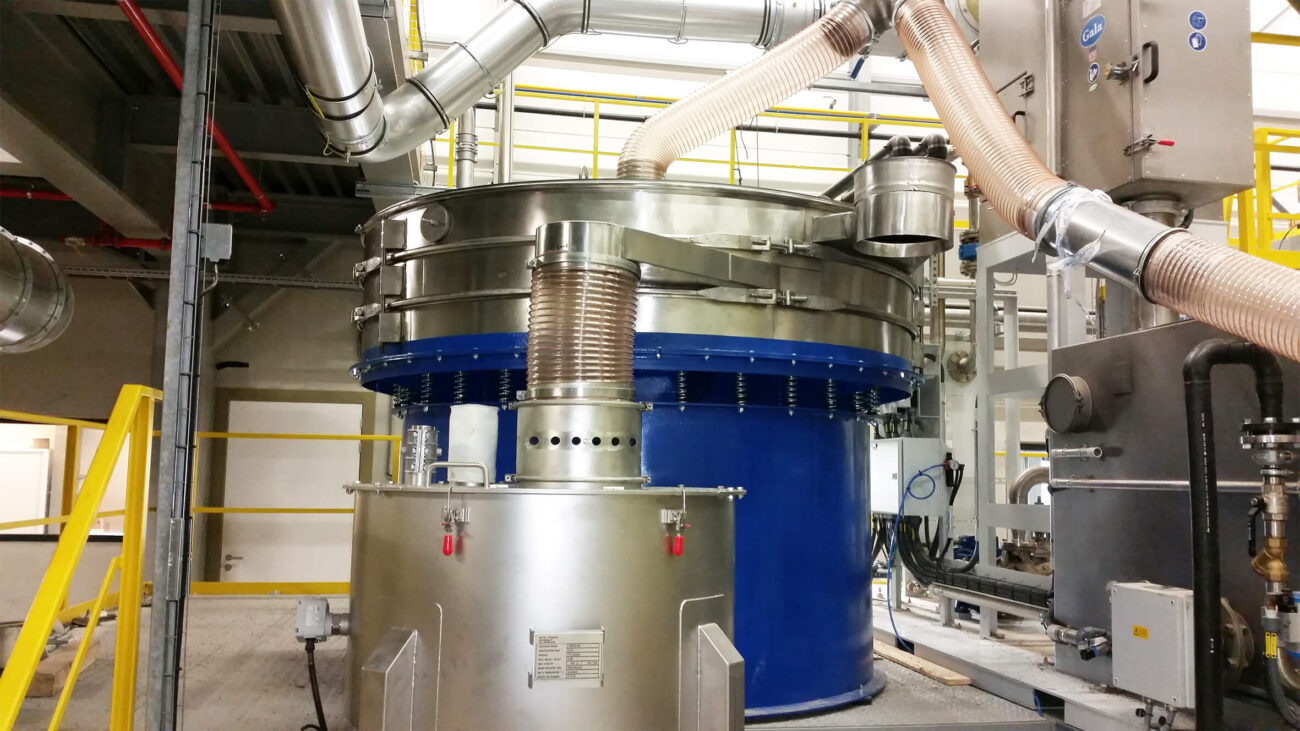Introduction
The pharmaceutical industry is one of the most tightly regulated sectors in the world. Every product that reaches patients must meet strict quality standards to ensure safety, consistency, and effectiveness. From the earliest stages of drug formulation to the final packaging of tablets, particle size, powder uniformity, and purity play a critical role. This is where vibrating screen machines provide a decisive advantage. They help pharmaceutical manufacturers achieve accurate particle sizing, eliminate contaminants, and guarantee uniformity in powders, excipients, and granules. Without this precision, issues such as inconsistent drug release, compromised stability, and patient safety risks can arise. In this article, I will explore the role vibrating screens play in pharmaceutical applications, their key benefits, technological advances, and their impact on efficiency and compliance.

Why Vibrating Screens Are Critical in Pharmaceutical Manufacturing
Vibrating screens are essential to modern pharmaceutical operations because they perform functions that directly impact drug quality and safety.
- Precision Particle Sizing – Medicines often rely on exact particle size distributions. For example, too large particles may lead to incomplete dissolution, while overly fine particles can cause clumping. Vibrating screens ensure uniform sizing.
- Purity and Contamination Control – Contamination can render an entire batch unusable. Screens remove unwanted particles, oversized lumps, and foreign matter.
- Excipients Screening – Excipients, which serve as carriers or stabilizers, must be carefully sized. Screening ensures ingredients like lactose or starch blend properly with APIs.
- Granule Classification – Whether formed through wet or dry granulation, granules need consistency for smooth tablet pressing. Screens classify them into correct size fractions.
- Regulatory Compliance – With regulators such as the FDA requiring strict control, vibrating screens provide the necessary reliability to meet compliance standards.
By fulfilling these roles, vibrating screens protect patients while helping manufacturers achieve reliable and reproducible results.
Applications in the Pharmaceutical Industry
Pharmaceutical processing involves a variety of materials that require precise screening. Vibrating screens are applied across different stages:
API Screening
Active pharmaceutical ingredients are the core compounds in drugs. They must have uniform particle sizes to ensure bioavailability and effectiveness. Vibrating screens refine APIs by separating oversized or undersized particles, producing powders that meet dissolution requirements.
Excipients Processing
Excipients like lactose, starch, and cellulose support the drug formulation but must mix evenly with APIs. Screening prevents segregation during mixing, reducing the risk of uneven dosages.
Granulation
Granulation transforms powders into larger, flowable granules. Vibrating screens sort these granules by size, ensuring smooth flow into tablet presses and preventing machine blockages.
Tablet Recycling and Crushing
Rejected or expired tablets are often crushed back into powder for recycling. Vibrating screens remove unusable particles, ensuring that only properly sized material re-enters production.
Powder Blending
When multiple powders are combined, uniform particle size promotes even distribution. This prevents concentrated pockets of API or excipients that could affect dosage accuracy.
Coating Materials
Powders used in tablet coatings must be extremely consistent. Vibrating screens remove clumps and impurities, resulting in smooth and defect-free coatings.

Advantages for Pharmaceutical Manufacturers
The use of vibrating screens yields both operational and quality benefits:
- Improved Quality Control – Consistent particle sizes reduce the risk of out-of-spec batches.
- Enhanced Patient Safety – By removing contaminants and irregular particles, vibrating screens ensure drug safety.
- Operational Efficiency – Automated and high-capacity screens speed up production without compromising quality.
- Regulatory Compliance – Designs with stainless steel 316L and hygienic finishes ensure compliance with GMP and FDA requirements.
- Cost Savings – More efficient material use minimizes waste and lowers production costs.
- Worker Safety – Enclosed systems reduce dust and exposure, protecting operators from hazardous pharmaceutical powders.
Choosing the Right Vibrating Screen for Pharmaceutical Applications
Selecting the right vibrating screen is critical for pharmaceutical production. Important factors include:
- Mesh Size – Fine meshes down to micron levels are needed for APIs and excipients.
- Ultrasonic Vibrating Screens – Best for preventing mesh clogging when working with ultra-fine powders.
- Construction Materials – Equipment should be built from pharma-grade stainless steel to avoid contamination and corrosion.
- Sealed and Dust-Tight Design – Containment ensures operator safety and product integrity.
- Ease of Cleaning – Clean-in-place (CIP) systems or quick disassembly options are essential for hygiene.
- Validation and Certification – Machines must comply with GMP, FDA, and ISO certifications for pharmaceutical use.
By considering these factors, manufacturers can ensure their vibrating screens meet production and regulatory requirements.

Technological Innovations in Pharmaceutical Screening
Advances in screening technology are making pharmaceutical processing even more efficient and precise:
- Ultrasonic Screening Technology – Uses high-frequency vibrations to keep meshes clear and prevent clogging, especially for fine APIs.
- CIP (Clean-in-Place) Systems – Allow machines to be cleaned internally without dismantling, ensuring hygiene and reducing downtime.
- Automated Particle Monitoring – Provides real-time data to monitor and control particle distribution, improving batch consistency.
- Containment Solutions – Specialized enclosures reduce operator exposure to potent APIs.
- Energy-Efficient Designs – Modern systems consume less power while delivering high screening accuracy.
These innovations help manufacturers meet rising demands for quality and safety in a cost-effective manner.
Conclusion
In pharmaceutical manufacturing, where quality and safety are non-negotiable, vibrating screens play an indispensable role. They guarantee uniform particle sizes, remove contaminants, and ensure compliance with global regulations. From APIs to excipients and granules, vibrating screens provide the precision needed to maintain consistency and safety across all stages of production.
With innovations such as ultrasonic screening, clean-in-place systems, and real-time monitoring, the future of pharmaceutical screening is moving toward greater efficiency and automation. For pharmaceutical manufacturers, investing in advanced vibrating screen technology is not merely an option—it is a strategic necessity to ensure safe, effective, and reliable medicines for patients worldwide.
